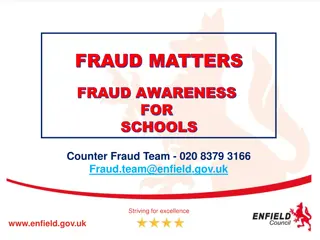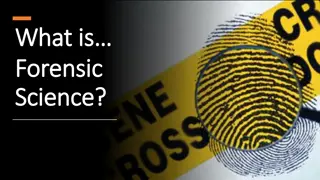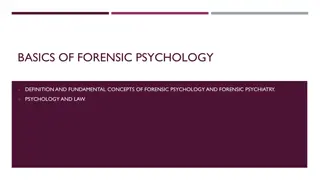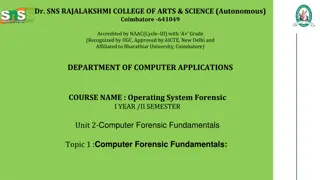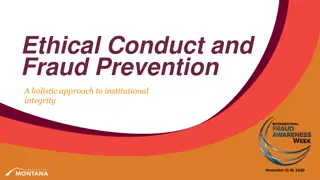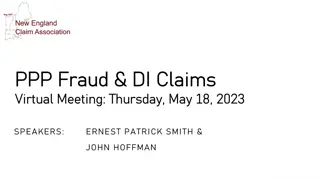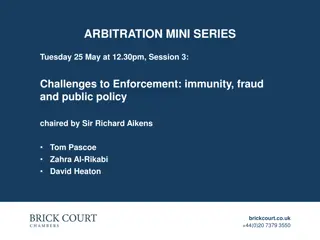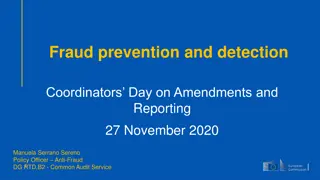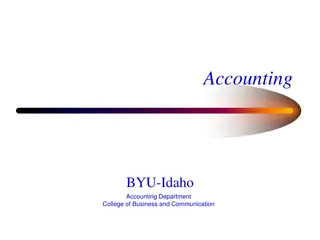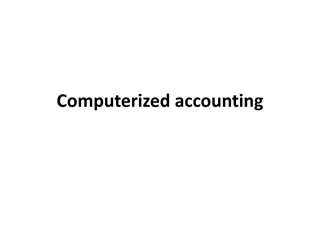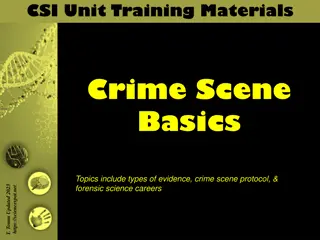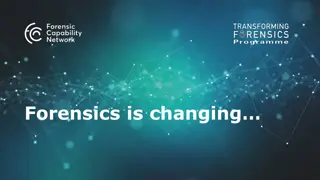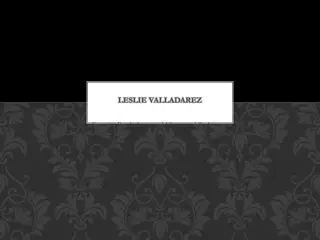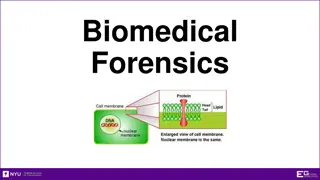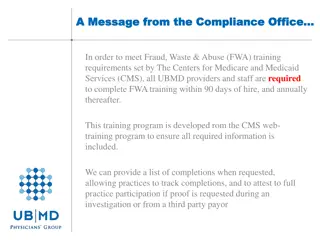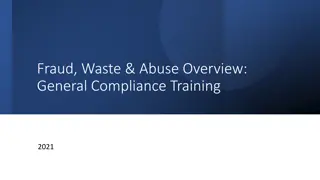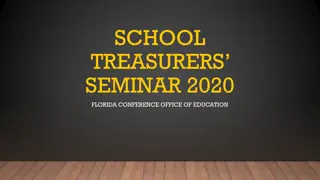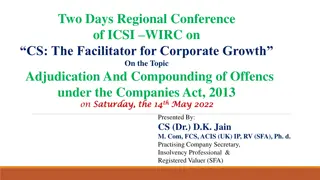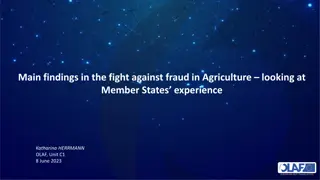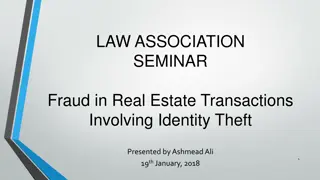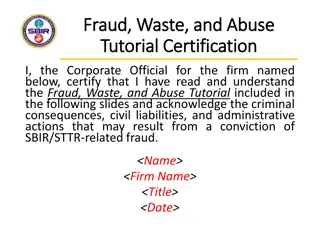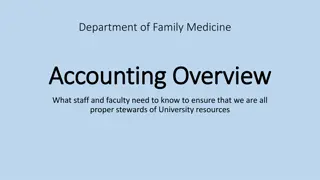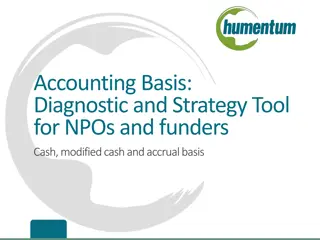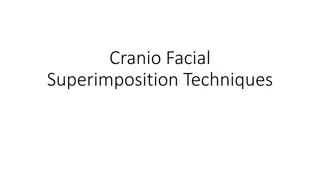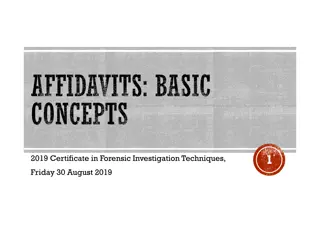Exploring Non-Fraud Research in Forensic Accounting
The panel discusses underrepresented areas in forensic accounting research, focusing on business valuation, expert witness roles, damages assessment, and more. Research opportunities in business valuation of private companies are highlighted, emphasizing the importance of appropriate discount rates and risk factors.
Download Presentation

Please find below an Image/Link to download the presentation.
The content on the website is provided AS IS for your information and personal use only. It may not be sold, licensed, or shared on other websites without obtaining consent from the author. Download presentation by click this link. If you encounter any issues during the download, it is possible that the publisher has removed the file from their server.
E N D
Presentation Transcript
Non-Fraud Research Opportunities in Forensic Accounting Research: James A. DiGabriele, PhD/DPS, CPA/ABV/CFF Professor of Accounting, Department of Accounting and Finance, Montclair State University Richard Riley Ph.D., CPA, CFE, CFF, CVA Louis F. Tanner Distinguished Professor of Public Accounting and Master of Forensic and Fraud Examination Program Coordinator, Accounting, West Virginia University Les Heitger, Ph.D. BKD Distinguished Professor of Forensic Accounting, Missouri State University
Non-Fraud Research Opportunities in Forensic Accounting Research: The objective of this panel is to promote non-fraud research opportunities in forensic accounting. According to the most recent AICPA Survey on Trends in Forensic and Valuation Services, non-fraud forensic accounting areas made up sixty-eight percent of the services offered.
The following areas are underrepresented in forensic accounting research, and study opportunities will be discussed: Business Valuation : Focus on the valuation of privately held companies. The Forensic Accountant as an Expert Witness: Behavior, Skills, Credentials. Individual Damages: Personal injury, wrongful death, employment law. Commercial Damages: Lost profits, business interruption.
Research Opportunity In Business Valuation of Private Companies: The capitalization or discount rate should be essentially the same as the rate of return (yield) that is currently being offered to attract capital or investment to the type, size, and financial condition of business that is being valued. The capitalization or discount rate must be consistent with the type of benefit streams to be capitalized or discounted (e.g., pre-tax versus after-tax, cash flow vs. earnings to invested capital or equity).
Research Opportunity In Business Valuation of Private Companies: Company Specific Risk The primary build-up formula is: Ke = Rf + ERP + IRPi + SP + SCR where: Ke = cost of equity Rf = risk free rate of return ERP = expected equity risk premium, or the amount by which investors expect the future return on equity securities to exceed the risk free rate IRPi = expected industry risk premium for industry (i) reflecting the relative risk of companies in that industry (if appropriate) SP = size premium Further Size Adjustment Depth of Management Importance of Key Personnel Stability of Industry Diversification of Product Line Diversification of Customer Base Diversification/Stability of Suppliers Geographic Location Stability of Earnings Earnings Margins Financial Structure Other Company Specific Premium 6.00% Research Focus: SCR = specific company risk for the company. 6.00%
Research Opportunity In Business Valuation of Private Companies: Research Focus: SCR = specific company risk for the company. There is currently no quantifiable method for SCR. It is left to the valuation analyst judgment. Research Area s: 1: What is a Quantifiable method to estimate SCR?, 2: What is true expected return of investors in private companies? Research Area s: 2: The industry risk premium can be wildly erratic; when is it appropriate to use the IRPi? Research Focus: IRP = Industry significant variance from year-to-year
Research Opportunity In Business Valuation of Private Companies : Judicial Valuation Judges are routinely faced with assessing the equity value of a company in shareholder disputes, matrimonial law, bankruptcy, merger and acquisitions, securities, tax, and other litigation. A fundamental premise of judicial valuation: markets are subject to inefficiencies and private company valuations are an art not a science (Yee 2002, DiGabriele 2006). Problem: Judges usually are not experts in financial theory or valuation, and as a result, courts have frequently struck a compromise between values in an effort to streamline efficiency.
Research Opportunity In Business Valuation of Private Companies : Judicial Valuation Prior studies on valuation and the courts, investigated specific valuation methods presented to the court and accepted as evidence in valuation cases: (Martin 1972). Brody and Berger(1977) analyzed weighted average valuation presented in two renowned court cases. Additional studies from Boseland (1963), Englebrecht and Davidson ( 1977) and, Englebrecht (1979) investigating courts rulings on valuation. Boatsman and Baskin ( 1981) tested Tax Court valuation procedures that were accepted by the court and further evaluated the results of the securities market. LeClair (1990) focused on prediction accuracy of valuation methods and earnings methods. Beatty, Riffe, and Thompson (1999) analyzed market comparables in valuing closely held companies in the Tax Court.
Research Opportunity In Business Valuation of Private Companies : Judicial Valuation DiGabriele (2006), court preferences for valuation methods: Are there systematic trends in court preferences for various valuation methods in specific courts? Valuation preferences based on type of case, marital dissolution, stockholder oppression, corporate dissolution, bankruptcy, and estate/gift tax cases. Which Macroeconomic factors (i.e., changes in gross domestic product and inflation) are related to valuation methods preferred by the court in cases. Qualitative Approaches: Interviews with Judges.
Research Opportunity In Business Valuation of Private Companies : Reporting, Calculation or Conclusion? The AICPA s Statements on Standards for Valuation Services (VS) section 100: 1) Conclusion of Value 2) Calculation of Value. Calculation and conclusion of value engagements do, however, both estimate value. The primary difference is that a calculation of value can be limited in scope by agreement with the client, whereas a conclusion of value is by nature unrestricted in its approach to value. It can be argued that the language in VS 100 conveys in a broad sense the idea that a valuation expert is restricted in scope whenever a calculation engagement is performed.
Research Opportunity In Business Valuation of Private Companies: Reporting Some valuation professionals believe that since a calculated value is lacking in all the procedures included in a valuation engagement, it is not a valuation conclusion and will most likely be difficult to defend when providing expert testimony. Furthermore, they state that a calculated value will also not likely be acceptable to the IRS or the SEC for the same reasons. However, recent court decisions where calculations of value reports were at the center of the court s findings seemed have no problem clearing the fitness and reliability restrictions set forth in Daubert when there were no scope limitations.
Research Opportunity In Business Valuation of Private Companies: Reporting VS 100 contributes unnecessary confusion to an already adversarial process. In court findings, it seems clear that the report format was not the most important criterion used by the courts in evaluating expert opinions. Instead, the courts focused, on whether the experts judgment in providing their opinions of value was compromised by any scope limitations. Research Opportunity: Should standard setting bodies update valuation standards to provide additional levels of valuation reporting?
The Forensic Accountant as an Expert Witness: Behavior, Skills, Credentials. AICPA Standards, VS 100 (SSVS 1): the principle of objectivity imposes the obligation to be impartial, intellectually honest, disinterested, and free of conflicts of interest. Forensic accounting expert testimony intends for a credentialed expert to remain objective in their findings. Objectivity is a critical element when appearing before a Trier of fact (judge or jury). The only exception exists when an expert is retained solely as a consultant; there is a great difference between a testifying expert and a consulting expert.
The Forensic Accountant as an Expert Witness: Behavior, Skills, Credentials. The problem: The Court is left to grapple with competing dissimilar opinions of forensic accountants; in a Tax Court case a judge rejected all expert testimony and determined that, the reports and testimony of the experts in this case are so dissimilar that the reliability of the experts is brought into question. Topical literature: Ricchiute (2004) found that hints of an attorney s position in cases of auditor liability directly influences an accounting experts decision. DiGabriele(2009) The Court s intolerance for disparate expert valuations appears to have evolved to the point where simply accepting the mean of the two expert reports is no longer a suitable option.
The Forensic Accountant as an Expert Witness: Behavior, Skills, Credentials. Research Question: Is the behavior of forensic accounting experts biased towards the party compensating them? Are there differences in skills between a testifying forensic accounting expert and a consulting expert? How do forensic accounting experts prepare for deposition testimony? How do forensic accounting experts prepare for court testimony?
The Forensic Accountant as an Expert Witness: Behavior, Skills, Credentials. In Tax Cases: Positive comments made by the judges noted that: experts had prior IRS experience; held the CPA, CFE,CVA and/or CMC credentials; completed undergraduate and graduate degrees and advanced specialty coursework; authored publications; enjoyed recognition as experts in the field; and had previous expert witness experience (Muehlmann, Burnaby & Howe 2012). Negative comments by the judges included: the lack of the CPA credential; not being an enrolled agent or otherwise authorized to practice before the IRS; absence of a state license to practice accounting; no prior IRS experience; and being a self proclaimed forensic accountant (Muehlmann, Burnaby & Howe 2012).
The Forensic Accountant as an Expert Witness: Behavior, Skills, Credentials. Research Questions: What is the role of credentials in judicial decisions (opinions)? Forensic Accounting, valuation analysts, fraud examiners, PhDs - Expert witness. Is there an association between judge s opinions in cases involving expert witnesses and the types of credentials held? Credentials to consider: PhD, CPA, CFE, CFF, CVA, ABV, CFA,
The Forensic Accountant as an Expert Witness: Behavior, Skills, Credentials. When a judge scolds a valuation expert for doing a poor job, what is the basis for that scolding? Is there a consistent pattern or issue? Variables to consider: Jury trial or bench trial The difference between the a female expert v male expert. Most experts are easily searched and their web sites have good information we may want to add, how long in practice and other biographical variables we find interesting.
Individual Damages: Personal injury, wrongful death, employment law. Elements of Damages Expected Earnings and Earnings Capacity Injured & terminated persons have an obligation to mitigate their damages. Injury Earnings losses are calculated net of income tax liabilities, and discounted (jurisdiction), would include only loss of earnings, benefits and household services. Calculations in death cases include not only loss of earnings and benefits, net of personal consumption spending, but also valuation of lost household services, companionship services, and advice and counsel services.
Individual Damages: Personal injury, wrongful death, employment law. Lost earnings in wrongful employment termination cases use also Expected Earnings and Earnings Capacity but, should approximate the amount of time a terminated employee would have remained employed for the defendant employer accounting for the probabilities of surviving, participating in the labor force, being employed, and remaining employed for that particular employer (Baum, 2013). Quinlan v. Curtiss-Wright Corporation (NJ, Appellate Div. 2012): plaintiff-employee and not the defendant-employer is ultimately responsible for proving that the compensable injuries are permanent or will endure into the future for a reasonably likely time.
Individual Damages: Personal injury, wrongful death, employment law. Research Opportunities: Selection of growth rates of earnings, the selection of discount rates, self-consumption rates, and base wages. What is legally permissible and what is economically correct. How long will it take a claimant to replace the current level of wages after termination? Is age or gender a factor? Role and weight given to medical and vocational experts.
Commercial Damages: Lost profits, business interruption. Forensic accounting experts are often utilized to present and defend lost profits damages. In a commercial dispute of this type, damages are estimated using accounting concepts, measurements, and assumptions to obtain a reasonable valuation. The principal theory of lost profits is that but for the damaging event, the claimant would have experienced a historical rate or even growth of revenue or profits. An expert estimates the difference between (1) the plaintiff s cash flow or other measure of economic income in the but for/projected world and (2) the plaintiff s cash flow or economic income in the actual/real world. The difference between these two estimates of economic income is then discounted to present value.
Commercial Damages: Lost profits, business interruption To recover damages for lost profits, plaintiff must prove it is reasonably certain they would have earned profits (damages) but for defendant s conduct (liability). The factors courts consider are: The court s confidence that the estimate is accurate The extent to which the claim is supported by verifiable data Whether the plaintiff has a track record The number of difficult to quantify risks in the plaintiff s projections The extent to which the lost profits fall within a defined range, i.e. 3.2 million to 3.5 million.
Commercial Damages: Lost profits, business interruption Research Opportunities: Growth rates to future lost profits. Risk adjusted discount rates. Net Income more risk than fixed expenses. Models for projecting Sales. The sales projection method compares projected revenue before the harmful event to actual revenue after the harmful event. Models for avoided costs (sometimes referred to as incremental expenses or non-continuing expenses). Cost behavior. Impact from industry and economic outlook. Statistical methods for meeting reasonable certainty but for. The role of liability.


